Growing Peanuts at Home might sound like a quirky challenge reserved for seasoned farmers, but trust me, it’s an incredibly rewarding and surprisingly simple DIY project that anyone can tackle! Imagine the satisfaction of harvesting your own homegrown peanuts, roasted to perfection and enjoyed fresh from your garden. Forget the store-bought variety – we’re talking about peanuts bursting with flavor and the pride of your own green thumb.
Peanuts, despite their name, aren’t actually nuts! They’re legumes, and their history stretches back thousands of years to South America, where they were a staple food source. They eventually spread across the globe, becoming a beloved snack and ingredient in countless cuisines. For centuries, cultivating peanuts has been a symbol of resourcefulness and self-sufficiency.
Why should you try growing peanuts at home? Well, besides the sheer fun of it, it’s a fantastic way to connect with nature, learn about the growing process, and enjoy a healthier, more sustainable lifestyle. Plus, knowing exactly where your food comes from is a huge bonus! In this article, I’m going to share some easy-to-follow tricks and hacks that will have you successfully growing peanuts at home, even if you’re a complete beginner. Get ready to dig in and discover the joy of homegrown goodness!
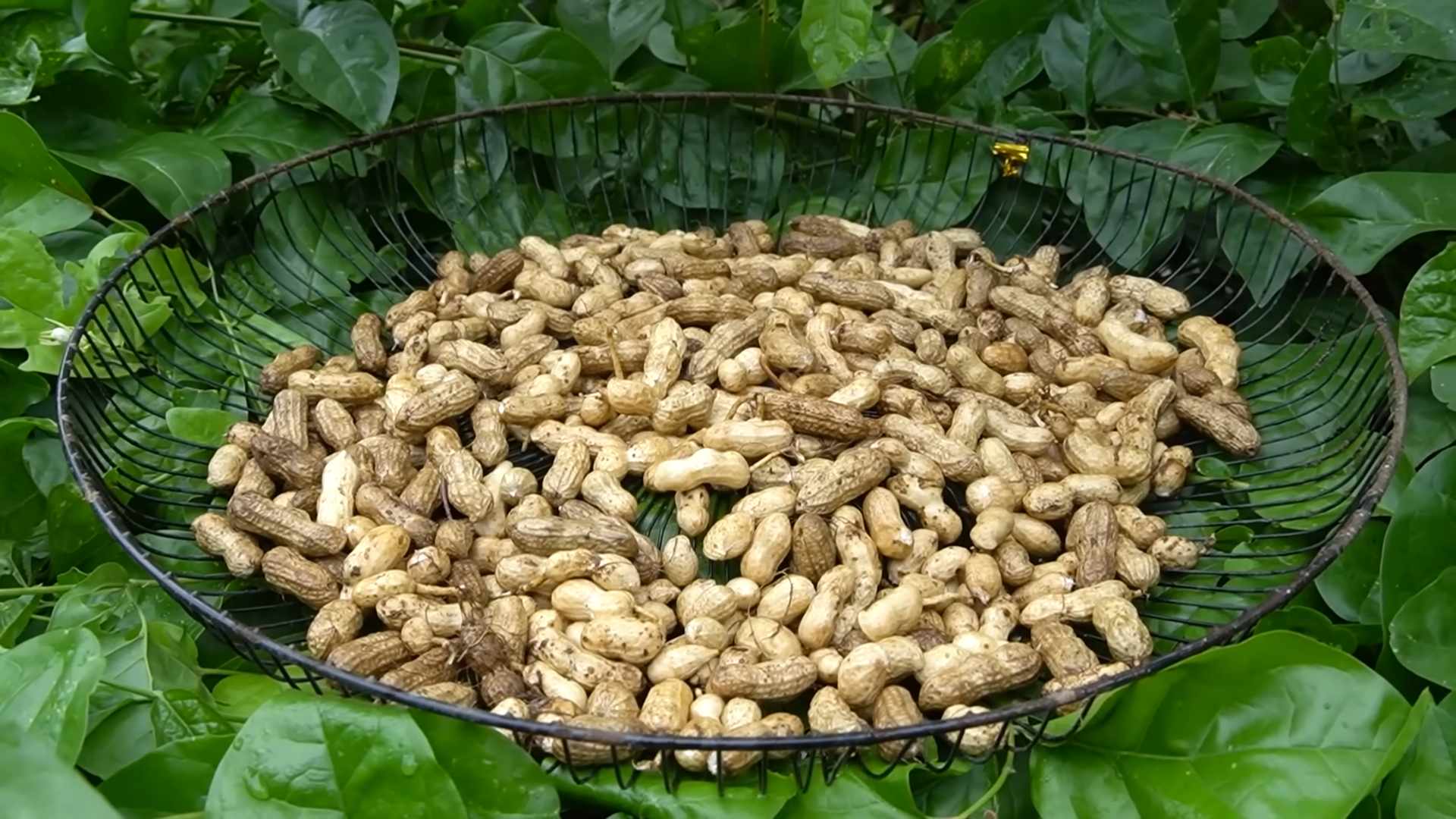
Growing Peanuts at Home: From Seed to Snack!
Hey there, fellow gardening enthusiasts! Ever thought about growing your own peanuts? It’s surprisingly easy and incredibly rewarding. Imagine the satisfaction of harvesting your own homegrown snacks! I’m going to walk you through the entire process, from choosing the right peanuts to enjoying your delicious harvest. Let’s get started!
Choosing Your Peanut Variety
Before we dive into the planting process, let’s talk about peanut varieties. Different types thrive in different climates, so selecting the right one is crucial for success.
* Virginia Peanuts: These are the large, often roasted peanuts you see in ballparks. They need a long growing season (120-130 days) and are best suited for warmer climates.
* Spanish Peanuts: These are smaller, red-skinned peanuts with a slightly nutty flavor. They mature faster (100-110 days) and are more tolerant of cooler temperatures.
* Runner Peanuts: These are the most commonly grown peanuts in the US, often used for peanut butter. They have a good yield and a moderate growing season (125-135 days).
* Valencia Peanuts: These have three or more small peanuts per shell and are known for their sweet flavor. They also have a shorter growing season (90-100 days).
I recommend starting with Spanish or Valencia peanuts if you’re a beginner or live in a cooler climate. They’re more forgiving and mature faster, giving you quicker results.
Preparing for Planting
Okay, so you’ve chosen your peanut variety. Now, let’s get the soil ready! Peanuts need well-drained, sandy loam soil with a slightly acidic pH (around 6.0-6.5).
* Soil Testing: It’s always a good idea to test your soil before planting anything. You can buy a soil testing kit at most garden centers or send a sample to your local agricultural extension office.
* Soil Amendment: If your soil is heavy clay or compacted, amend it with plenty of organic matter like compost, well-rotted manure, or peat moss. This will improve drainage and aeration.
* Sunlight: Peanuts need at least 6-8 hours of direct sunlight per day. Choose a sunny spot in your garden where they’ll get plenty of light.
* Fertilizing: Peanuts are legumes, which means they can fix nitrogen from the air. However, they still benefit from a balanced fertilizer at planting time. Look for a fertilizer with a ratio of 5-10-10 or similar.
I usually add a generous amount of compost to my peanut patch before planting. It really helps improve the soil structure and provides essential nutrients.
Planting Your Peanuts
Now for the fun part – planting! You can start peanuts indoors or directly sow them in the garden. I prefer direct sowing because it’s less work and the plants seem to thrive better.
1. Timing: Wait until the soil has warmed up to at least 65°F (18°C) before planting. This is usually a couple of weeks after the last frost.
2. Shelling: Gently crack open the peanut shells and remove the peanuts. Be careful not to damage the peanuts themselves.
3. Soaking (Optional): You can soak the peanuts in water for a few hours before planting to speed up germination. However, I’ve found that they germinate just fine without soaking.
4. Spacing: Plant the peanuts about 1-2 inches deep and 6-8 inches apart in rows that are 2-3 feet apart.
5. Watering: Water the soil thoroughly after planting. Keep the soil consistently moist until the peanuts germinate.
Don’t plant too early! Peanuts are very sensitive to cold soil, and they won’t germinate if the soil is too cold.
Caring for Your Peanut Plants
Once your peanut plants have sprouted, it’s important to provide them with proper care to ensure a good harvest.
* Watering: Water regularly, especially during dry spells. Peanuts need about 1 inch of water per week.
* Weeding: Keep the area around your peanut plants free of weeds. Weeds compete with the peanuts for nutrients and water.
* Hilling: About a month after the plants emerge, hill the soil around the base of the plants. This helps support the developing pegs (the stems that grow down into the soil and form the peanuts).
* Fertilizing: You can side-dress your peanut plants with a small amount of fertilizer about a month after they emerge. Use a fertilizer with a low nitrogen content.
* Pest Control: Peanuts are relatively pest-resistant, but they can be attacked by aphids, spider mites, and leafhoppers. If you notice any pests, treat them with an appropriate insecticide or insecticidal soap.
Hilling is crucial for peanut production. The pegs need to be able to penetrate the soil in order to form the peanuts.
Harvesting Your Peanuts
Harvest time is the most exciting part! You’ll know your peanuts are ready to harvest when the leaves start to turn yellow and the plants begin to die back. This usually happens about 120-150 days after planting, depending on the variety.
1. Digging: Use a garden fork or shovel to carefully dig up the peanut plants. Be gentle so you don’t damage the peanuts.
2. Shaking: Shake off as much soil as possible from the plants.
3. Drying: Hang the plants upside down in a well-ventilated area for 2-3 weeks to dry. You can also spread the peanuts out on a screen or tarp to dry.
4. Threshing: Once the plants are dry, you can remove the peanuts from the vines. This is called threshing. You can do this by hand or use a peanut thresher.
5. Curing: After threshing, cure the peanuts for another week or two in a cool, dry place. This will improve their flavor and shelf life.
Don’t wait too long to harvest! If you wait too long, the peanuts will start to sprout in the ground.
Roasting Your Peanuts
Now that you’ve harvested and cured your peanuts, it’s time to roast them! Roasting brings out the nutty flavor and makes them even more delicious.
1. Washing: Wash the peanuts thoroughly to remove any remaining soil.
2. Brining (Optional): You can brine the peanuts in a salt water solution for a few hours before roasting. This will give them a salty flavor.
3. Roasting: Preheat your oven to 350°F (175°C). Spread the peanuts out in a single layer on a baking sheet. Roast for 20-25 minutes, or until they are golden brown and fragrant.
4. Cooling: Let the peanuts cool completely before storing them in an airtight container.
I love to add a little bit of sea salt to my roasted peanuts. It really enhances the flavor.
Storing Your Peanuts
Proper storage is essential for keeping your peanuts fresh and delicious.
* Unroasted Peanuts: Store unroasted peanuts in an airtight container in a cool, dry place. They will last for several months.
* Roasted Peanuts: Store roasted peanuts in an airtight container at room temperature. They will last for a few weeks.
* Freezing: You can also freeze peanuts for longer storage. They will last for up to a year in the freezer.
Make sure your peanuts are completely dry before storing them. Moisture can cause them to mold.
Troubleshooting
Even with the best care, you might encounter some problems when growing peanuts. Here are a few common issues and how to deal with them:
* Poor Germination: If your peanuts aren’t germinating, the soil might be too cold or too wet. Make sure the soil temperature is at least 65°F (18°C) and avoid overwatering.
* Yellowing Leaves: Yellowing leaves can be a sign of nutrient deficiency. Fertilize your plants with a balanced fertilizer.
* Pest Infestations: Check your plants regularly for pests and treat them with an appropriate insecticide or insecticidal soap.
* Disease: Peanuts can be susceptible to fungal diseases. Make sure your plants have good air circulation and avoid overhead watering.
Don’t be afraid to experiment! Gardening is all about learning and trying new things.
Enjoying Your Homegrown Peanuts
Congratulations! You’ve successfully grown your own peanuts. Now it’s time to enjoy the fruits (or rather, nuts) of your labor.
* Snacking: Roasted peanuts are a delicious and healthy snack.
* Peanut Butter: You can use your homegrown peanuts to make your own peanut butter.
* Cooking: Pe
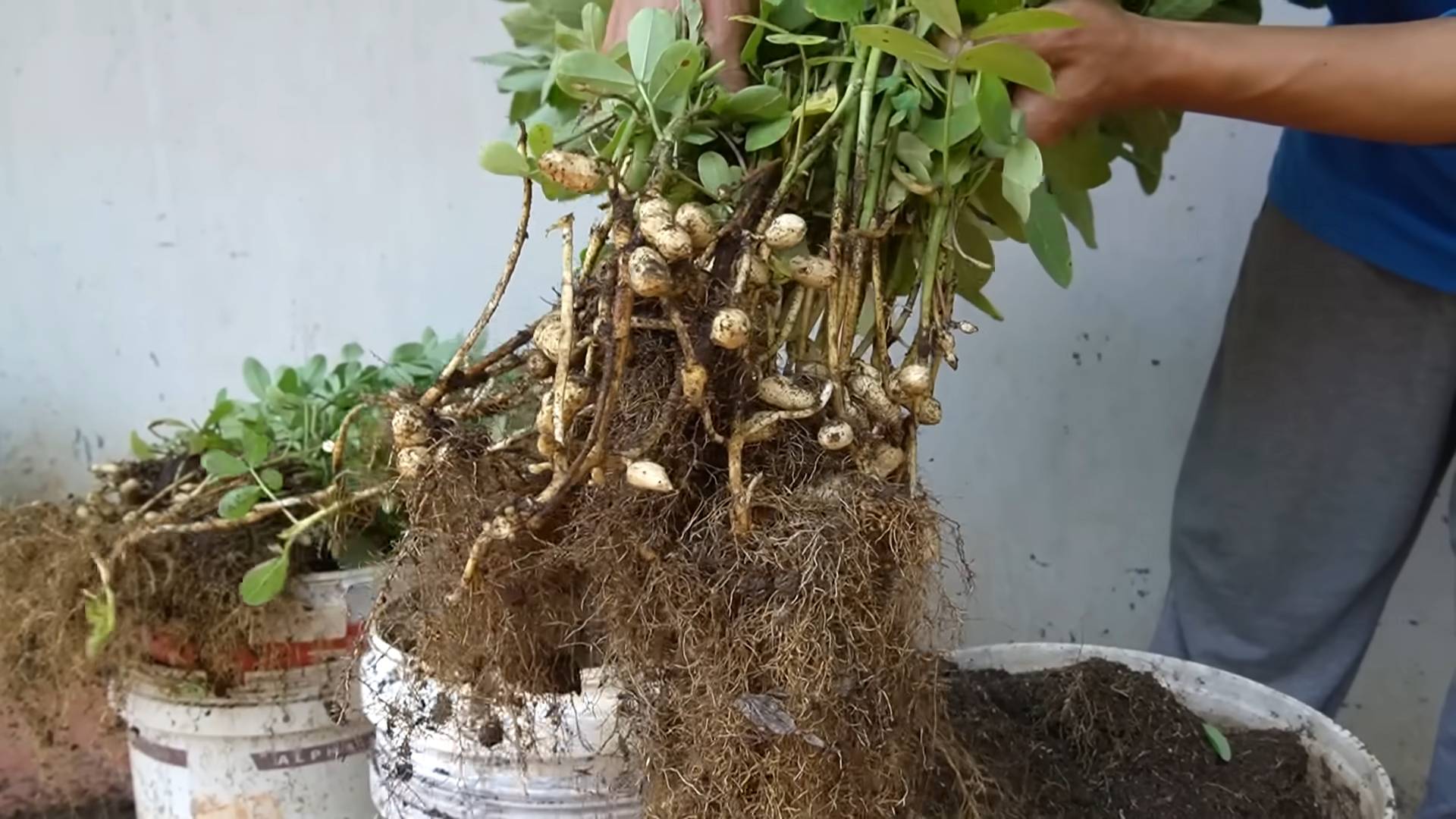
Conclusion
So, there you have it! Growing peanuts at home, while perhaps seeming a bit unconventional, is a surprisingly rewarding and accessible gardening project. It’s more than just planting a seed and waiting; it’s about connecting with the natural world, understanding the life cycle of a unique plant, and ultimately, enjoying the fruits (or rather, nuts!) of your labor.
Why is this DIY trick a must-try? Because it offers a unique gardening experience that goes beyond the typical tomatoes and cucumbers. It’s a conversation starter, a learning opportunity for kids, and a chance to impress your friends with homegrown peanuts. Plus, the taste of freshly harvested, homegrown peanuts is simply unparalleled. The subtle sweetness and earthy flavor are a world away from the commercially processed varieties you find in stores.
But the benefits extend beyond just the taste. Growing your own peanuts allows you to control the entire process, ensuring that your peanuts are grown organically and free from harmful pesticides. You’ll know exactly what went into your peanuts, from the soil they grew in to the water they received. This peace of mind is invaluable in today’s world.
Looking for variations? Consider experimenting with different peanut varieties. Virginia peanuts are known for their large size and are great for roasting. Spanish peanuts are smaller and have a higher oil content, making them ideal for peanut butter. Runner peanuts are commonly used in commercial peanut butter production. Each variety offers a slightly different flavor profile and texture, so find the one that suits your taste.
You can also adapt the growing method to suit your space. If you have limited garden space, consider growing peanuts in large containers. This allows you to control the soil conditions and move the plants around as needed. Just make sure the containers are deep enough to accommodate the developing peanut pods.
Another fun variation is to experiment with different soil amendments. Adding compost or other organic matter to the soil can improve drainage and provide essential nutrients for healthy peanut growth. You can also try inoculating the soil with nitrogen-fixing bacteria, which can help the peanut plants absorb nitrogen from the air.
Ultimately, the success of your peanut growing venture depends on your willingness to experiment and learn. Don’t be afraid to try new things and adapt your approach as needed. The most important thing is to have fun and enjoy the process.
We wholeheartedly encourage you to give this DIY trick a try. It’s a fun, educational, and ultimately delicious way to connect with nature and enjoy the bounty of your own backyard. Once you’ve harvested your first batch of homegrown peanuts, we’d love to hear about your experience! Share your photos, tips, and stories with us in the comments below. Let’s build a community of peanut-growing enthusiasts and learn from each other. Let us know what kind of growing peanuts at home experience you had.
Frequently Asked Questions (FAQ)
What is the best time to plant peanuts?
The ideal time to plant peanuts is after the last frost, when the soil temperature has warmed to at least 65 degrees Fahrenheit (around 18 degrees Celsius). This typically falls in late spring or early summer, depending on your climate. Planting too early can result in poor germination and stunted growth. Check your local weather forecasts and soil temperature readings to determine the optimal planting time for your region.
What kind of soil do peanuts need?
Peanuts thrive in well-drained, sandy loam soil. This type of soil allows for good aeration and drainage, which is essential for healthy root development and peanut pod formation. Avoid heavy clay soils, as they can become waterlogged and inhibit peanut growth. If you have clay soil, amend it with compost, sand, and other organic matter to improve drainage and aeration. The ideal soil pH for peanuts is between 6.0 and 6.5.
How much sunlight do peanuts need?
Peanuts require at least 6-8 hours of direct sunlight per day to thrive. Choose a planting location that receives ample sunlight throughout the day. Insufficient sunlight can result in weak, leggy plants and reduced peanut production. If you are growing peanuts in containers, make sure to place them in a sunny spot.
How often should I water peanuts?
Peanuts need consistent moisture, especially during flowering and pod development. Water deeply and regularly, ensuring that the soil remains consistently moist but not waterlogged. Avoid overhead watering, as this can promote fungal diseases. Use a soaker hose or drip irrigation system to deliver water directly to the roots. Reduce watering frequency as the peanuts mature and the leaves begin to yellow.
How long does it take for peanuts to mature?
Peanuts typically take 120-150 days to mature, depending on the variety and growing conditions. You’ll know the peanuts are ready to harvest when the leaves begin to yellow and the inside of the peanut shells turn brown. You can also dig up a few plants to check the peanut pods. If the pods are plump and the kernels are fully developed, it’s time to harvest.
How do I harvest peanuts?
To harvest peanuts, carefully dig up the entire plant, being careful not to damage the peanut pods. Gently shake off any excess soil and allow the plants to dry in the sun for several days. This will help to cure the peanuts and improve their flavor. Once the plants are dry, you can remove the peanut pods from the vines.
How do I store peanuts?
Store peanuts in a cool, dry place in an airtight container. Shelled peanuts can be stored in the refrigerator for several months or in the freezer for up to a year. Unshelled peanuts can be stored in a cool, dry place for several months.
What are some common peanut pests and diseases?
Common peanut pests include aphids, spider mites, and leafhoppers. These pests can be controlled with insecticidal soap or neem oil. Common peanut diseases include leaf spot and white mold. These diseases can be prevented by practicing good sanitation and avoiding overhead watering. If diseases do occur, treat them with a fungicide.
Can I grow peanuts indoors?
While it’s possible to grow peanuts indoors, it’s not ideal. Peanuts require a lot of sunlight and space to thrive, which can be difficult to provide indoors. If you do decide to grow peanuts indoors, make sure to provide them with plenty of sunlight and use a large container. You may also need to supplement with artificial lighting.
Are there any specific fertilizer requirements for peanuts?
Peanuts are legumes, which means they can fix nitrogen from the air. However, they still benefit from fertilization, especially with phosphorus and potassium. Use a fertilizer that is specifically formulated for legumes or a balanced fertilizer with a higher phosphorus and potassium content. Avoid over-fertilizing with nitrogen, as this can promote excessive vegetative growth and reduce peanut production. A soil test can help determine the specific nutrient needs of your soil.


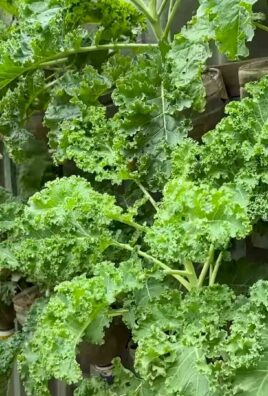
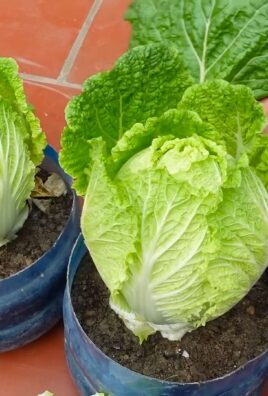
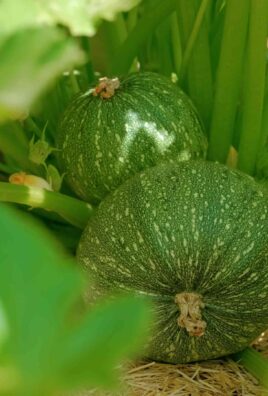
Leave a Comment